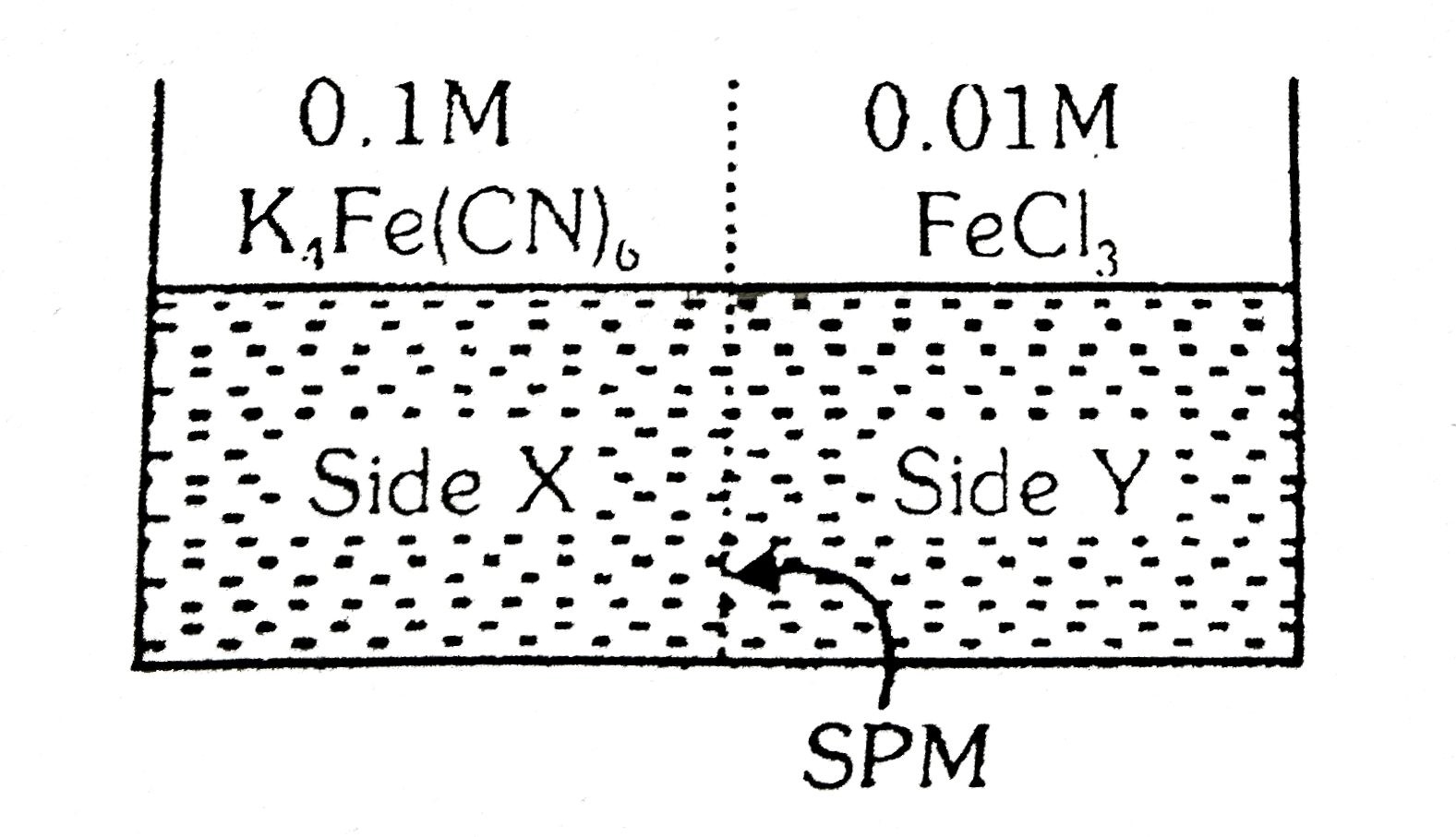CNSө ions give red colour with Fe3+ ions in aqueous solution as:
Fe3+(aq)+3CNSө(aq)→Fe(CNS)red3(aq)
If 0.1M KCNS solution is separated from 0.1MFeCl3 solution by means of a semi-permeable membrane, red colour will appear on:
a.FeCl3 soluion , b. KCNS solution side ,
c. Both sides , d. Neither side
FeCl3 solution
KCNS solution side
both sides
neither side
Fe3+(aq)+3CNS−(aq)→Fe(CNS)3Red(aq)
⇒ Only solvent molecule move from Dilute solution to concentrated solution.
So, no red colour will appear.

Topper's Solved these Questions
- THEORY OF SOLUTIONSBOOK - VMC MODULES ENGLISHCHAPTER - THEORY OF SOLUTIONSEXERCISE - JEE Main (Archive)
57 Videos
- THEORY OF SOLUTIONSBOOK - VMC MODULES ENGLISHCHAPTER - THEORY OF SOLUTIONSEXERCISE - JEE Advanced (Archive)
31 Videos
- THEORY OF SOLUTIONSBOOK - VMC MODULES ENGLISHCHAPTER - THEORY OF SOLUTIONSEXERCISE - LEVEL 1
75 Videos
- THE SOLID STATEBOOK - VMC MODULES ENGLISHCHAPTER - THE SOLID STATEEXERCISE - EXERCISE-J
10 Videos
- THERMOCHEMISTRYBOOK - VMC MODULES ENGLISHCHAPTER - THERMOCHEMISTRYEXERCISE - JEE ADVANCED (ARCHIVE)
31 Videos
Similar Questions
Knowledge Check
Which of the following salts is the most basic in aqueous solution?
(a)Al(CN)3
(b)CH3COOK
(c)FeCl3
(d)Pb(CH3COO)2AAl(CN)3BCH3COOKCFeCl3DPb(CH3COO)2If on adding FeCl3 solution to acidified Lassaigne solution, a blood red colouration is produced, it indicates the presence of
ASBNCN and SDS and Cl
FeCl3 on reaction with K4[Fe(CN)6] in aqueous solution gives blue colour. These are separated by a semi-permeable membrane AB as shown. Due to osmosis, there is

View SolutionFeCI3 on reaction with K4[Fe(CN)6] in aqueous solution gives blue colour.

These are separated by a semipermeable membrane AB as shown. Due to osmosis there is:
View SolutionFeCI3 on reaction with K4[Fe(CN)6] in aqueous solution gives blue colour.

These are separated by a semipermeable membrane AB as shown. Due to osmosis there is:
View SolutionExplain why :
A blood red colouration is obtained on addition of FeCl3to Lassaigne's solution when the compound contains both N and S.
View SolutionOn adding few drops of dilutie HCl or FeCl3 to freshly precipitated ferric hydroxide a red coloured colloidal solution is obtained. The phenomenon is know as
View SolutionThe sodium extract of an organic compound on treatment with FeSO4 solution, FeCl3 and HCl gives red solution. The red colour of
View Solution
